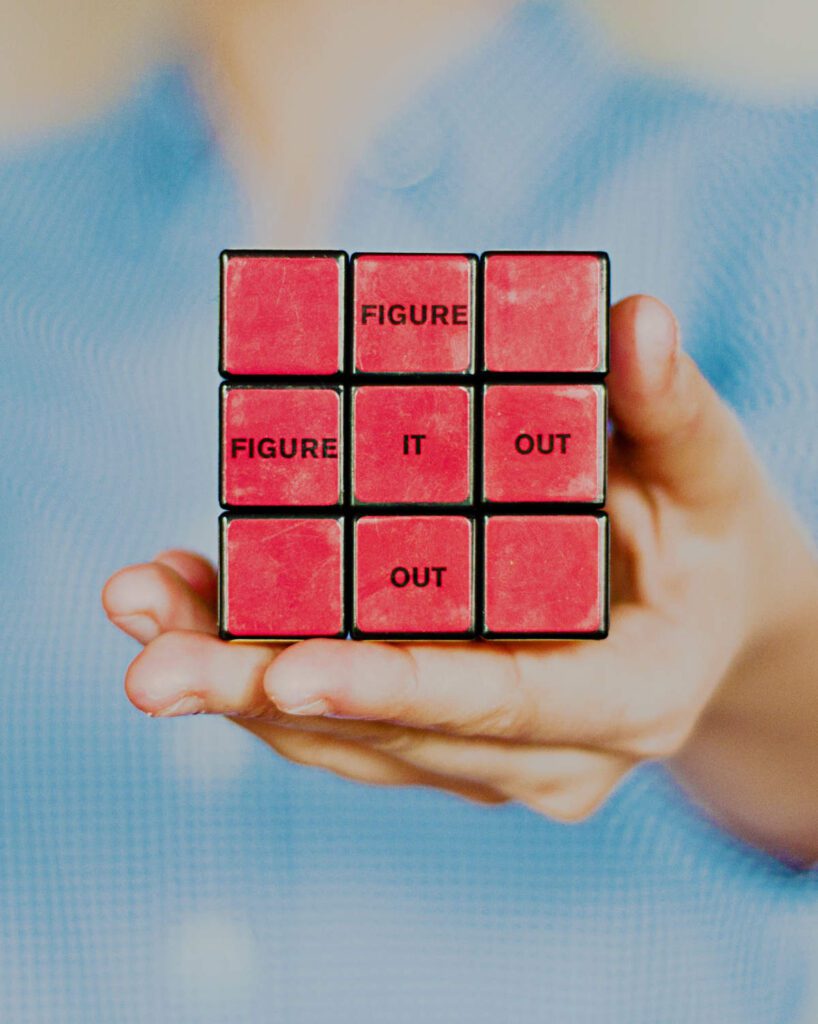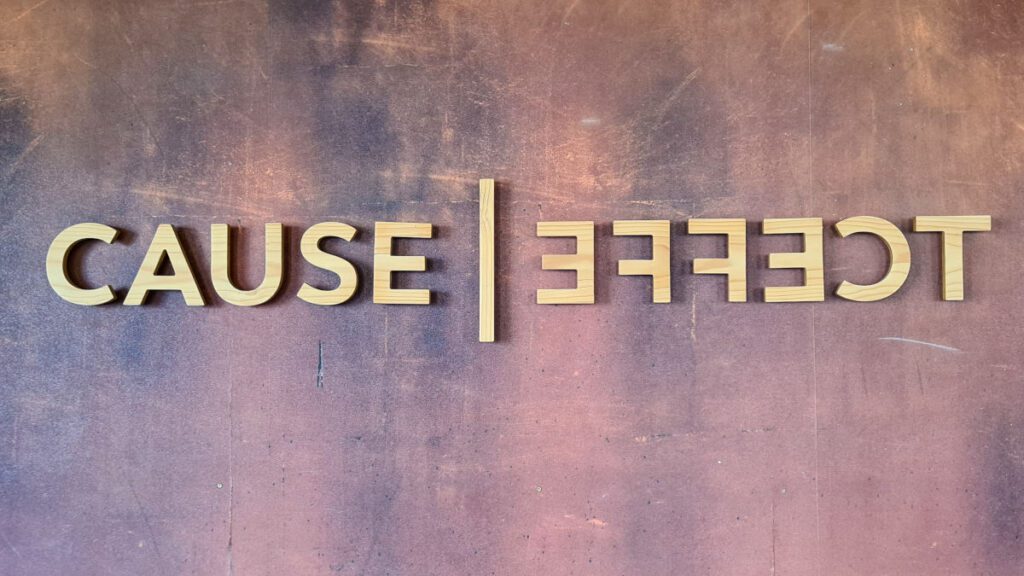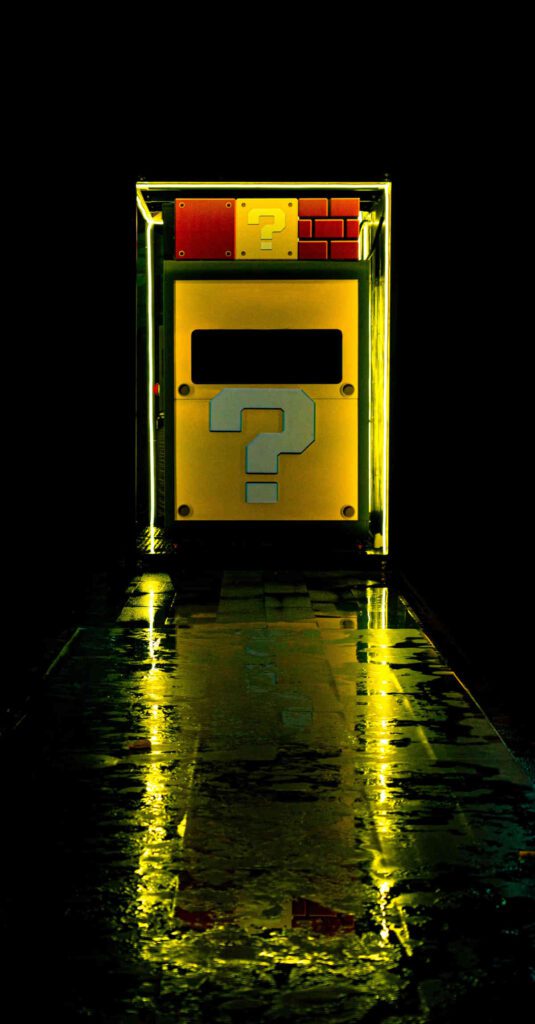Everyone encounters challenges in their personal and professional lives, but sometimes the path to a solution can seem unclear. By learning some strategies for dealing with a problem, you can gain valuable insights and approach it with a fresh perspective. So, if you’re ready to do this and tackle problems head-on, keep reading!

What exactly is the Problem?
Taking the time to clarify a problem is similar to sharpening your axe before chopping down a tree. It may seem like a delay, but it dramatically improves your efficiency in dealing with a problem, and improving the outcome in the long run.

A clear understanding of what exactly the problem is the foundation for effective problem-solving. The benefits of taking some time to do this includes:
- A pause like this could well stop you from either just charging into a situation with a head full of steam, or falling down into a pit of overwhelm, without knowing much about what you are having to deal with.
- It helps to avoid unnecessary trial and error, saving valuable time, energy and resources that may otherwise be wasted on irrelevant solutions.
- It also ensures that everyone involved has a clear, agreed understanding of the issue. This helps to support improved working together and reduces the potential for misunderstandings.

- It also stimulates critical thinking, pushing you to question assumptions and explore different perspectives.
- With a well-defined problem, you can develop targeted solutions that address the root cause rather than just the symptoms.
- It empowers you to make informed decisions and take confident action towards resolving the problem successfully.
So, just do it and see if things don’t work better. This time can also give you some room to breathe, reduce your tension so that you are ready to take any necessary action when needed.
1.Write it Down

Putting pen to paper is more than just a simple act; it’s a powerful tool in clarifying problems and working towards solutions. When you write down the details of a problem, you’re effectively untangling the complex web of thoughts in your mind and laying them out in a structured, organized manner. This process allows you to pinpoint the core issues, separating the wheat from the chaff, so to speak.
Also, writing can help with emotional release, to offload some of the stress and anxiety associated with the problem. This can create more space and ease in your mind. This is a better place to be and help you to approach the issue with a more calm, focused mindset.
So, don’t simply let the problem go around and around in your head – write it down. This is a core tool in dealing with a problem. You’ll be surprised how this simple act can light the path to possible solutions.
2.Define the Problem
Narrowing down, defining, or describing a problem with clearly is similar to shining a spotlight on a stage. It brings the main aspects to the front while pushing the irrelevant stuff into the shadows.

This process of analysis strips a problem down to its bare bones, revealing its true nature and difficulties. It allows you to see beyond the surface symptoms and understand the deeper causes. By doing this, you can identify which parts need immediate attention and which ones can wait or are not even important.
This focused approach not only makes problem-solving more manageable but also ensures that your efforts are directed towards the areas that you can or must do something about as soon as possible. Its like drawing a map that can guide you to the heart of the issue, making a way for helpful, effective solutions. Start by defining your problem, and you’re halfway to solving it.
3.Understand the Impact
Understanding the impact of a problem is like turning on the headlights in a dark tunnel. It lights up the road ahead and gives you a clearer sense of direction. This also helps you to take a helicopter view of the issues, and people, involved with dealing with a problem.

Whether big or small, real or imagined, the potential impact of a problem can give you important information about its nature and importance. It helps you gauge who might be affected and how, thereby allowing you to prioritize solutions that minimize harm and maximize benefits.
Sometimes, the problem might not even have a possible solution. In such cases, understanding the impact can help you make peace with this reality or come up with some plans to try to manage potential consequences.
Remember, assessing the impact isn’t about magnifying the problem, but about gaining a holistic perspective. It’s like viewing the problem through a wide-angle lens or with a drone. You see the bigger picture, understand the landscape better, and therefore have more useful information to work towards meaningful solutions.
4.Identify the Causes

Identifying the root cause(s) of a problem is like unravelling a mystery. This process empowers you with a clear understanding of the issue at hand. This way you can come up with targeted plans that deal with the underlying issues instead of just plastering over the surface.
This approach not only helps you to deal with the immediate issue but also supports you in preventing similar problems from happening again in the future.
So, identifying the root cause(s) is not just about finding a solution for now. It’s also about growing your perspective about problems and developing a problem-solving approach to overcoming challenges. This will be helpful in many different situations where problems can arise.
5.Gather Information

Gathering information about a problem is like collecting up the pieces of a puzzle. Each piece, or data point, may not make much sense on its own, but when put together with the others, a clear picture begins to emerge.
This process of information gathering is important to your understanding the scope and nature of the problem at hand. Then you can begin to develop ways and action plans that directly address the heart of the issue. The more information you have, the better equipped you are to find effective solutions. Having relevant information increases your success in dealing with a problem.
6.Seek Outside Input

When we’re stuck in our own heads, chewing a problem over and over again, it’s easy to get lost in the maze of our thoughts and biases. But when you invite others to help you you also have access to their unique experiences, knowledge, and viewpoints. This may reveal options you might not have seen on your own.
You may also be able to delegate aspects of working towards a helpful solution to others. Working together increases the support and is a powerful way to realise a solution. Make sure that all are aware of what the problem really is, that there is agreement on the solution, that everyone understands their roles in working this out to the benefit of all.
This way you are not dealing with a problem by yourself, and you have readily available support.
7.Ask Questions
Asking some powerful questions about a problem helps to guide you towards understanding and resolution. Questions serve as probes, delving into the heart of the issue and turning up important insights.

It is often said that the answer in in the question, so try to ask better and better questions, to get better answers.
Questions can challenge your assumptions, and compel you to think critically. They also stimulate creative thinking. The disentangling effect of questions helps you to focus your efforts on what really matters and to come up with useful answers to solve the issue.
The process of coming up with these questions encourages you to see the problem from multiple angles, giving a clearer understanding of what is important for effective problem-solving. This process brings with it the bonus of turning a problem into an opportunity for learning and growth.
8.Open your Mind

Approaching a problem with an open mind is like setting sail on an open sea – it may be challenging, but the vast expanse of ocean offers limitless possibilities for discovery and answers. An open mind lets you stand back from what it is that you think you know or biases that can cloud your understanding of the issue.
It encourages curiosity, invites new ways of thinking, and develops a willingness to explore unfamiliar approaches to solutions. This way, solving a problem transforms the challenge from a big hurdle into a journey of exploration and learning, leading you closer to effective solutions.
Look at every problem as a chance for growth and improvement. Understanding and clarifying your problems may seem like an added problem at first, but it’s an essential step towards finding effective solutions. So, give it a try! With these strategies you have some new tools to dissect any issue that comes your way. Be patient with yourself and trust the process; the answer often comes when you least expect it. Happy solving!